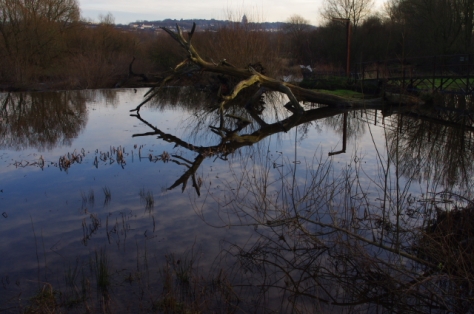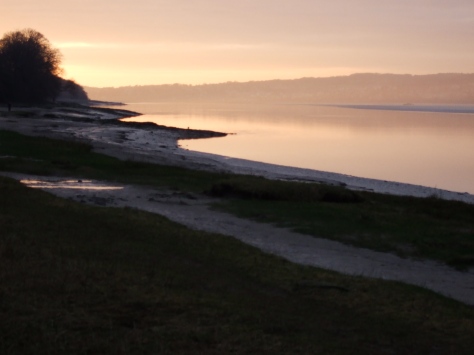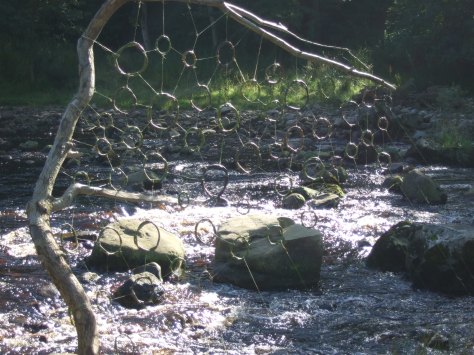
if only I a passerby could pass
as clear as water through a plume of grass
to find the sunlight hidden at the tip
turning to seed a kind of lifting rain drip
then I might know like water how to balance
the weight of hope against the light of patience
From ‘A short story of falling’ by Alice Oswald
I have just moved house, just a short distance, from the river plain of the small city I live in, to near the top of the hill that leads down to the centre, the castle and the river it overlooks. My local walks with the dog have consequently changed. I am happy to be higher up, looking out into the western sky, closer to the heart of the city, but I miss the river, with its weirs, its diving birds, its tidal rhythms.

photograph by Ian Taylor
I still have the canal instead, with its slower pace, its swans nesting, its straight edges and mellow stone bridges.
What is it about water that makes us seek it out? I am focusing here on freshwater-ways, as the sea needs a salty blog space of its own. I turned to Alice Oswald as she has a lot of experience of transforming the slippery flow of rivers into words. On YouTube there is a video of her reading the poem I quote from above. Introducing it, she says:
‘What I love about water is that it spends its whole time falling. It’s always, apparently, trying to find the lowest place possible. And when it finds the lowest place possible it lies there, wide awake.’
(the Griffin Poetry Prize, 2017, https://www.youtube.com/watch?v=B4rKwW5tgXk).
Yes, it is the constant movement of rivers, streams, becks, and even canals, that helps smooth out any worries or burdensome feelings I have brought with me to the riverbank. I can drop them, consciously or unconsciously, into the water flows and eddies, and they are born away. I hadn’t thought of water flows specifically as the act of falling, as Oswald does here, but I shall do from now on. See how she brings in the rain into our thoughts about water and flow. How significant the falling rain is to the running rivers. How I should always celebrate its presence.

While Oswald concentrates on the fall of water, Katharine Norbury wrote of her burning desire to walk against this seeking out of sea level place, from river mouth to river source, in the direction taken by salmon, returning to spawn, of how she walked up the fifteen miles of Dunbeath Water to find its source.
‘I crossed the tributary with a sense of elation, and was surprised by quite how much my heart warmed at the sight of the water. The river was gently and visibly rising, held in a gentle V in the land. The fear that I had felt when I first saw the map had quite dissipated. While I followed the river I could not get lost. It was as constant and as concrete as a ball of flax. I folded the map away and put it at the bottom of my bag.’
from ‘the Fish Ladder’.
Walking against the flow means the river can swiftly sweep unwanted concerns away and out of sight, downstream . Waterways give you a choice – to climb towards its beginnings as a water flow, or to follow its fall. Which ever direction you choose, as Norbury says, you can relax into its journey. It is the path, for now.

‘I stepped back down into the riverbed. It was filled with new grass, brilliant and green, no higher than my foot. I was happy for the companionship of the water. The river was now little wider than a stream, but it was my clue through the labyrinth.’
From ‘the Fish Ladder’.
A river or stream or canal gives you a path you can follow, and a companion to walk with, whose flow will help open up your mind, your eyes.
 My photos also remind me that these small or large water beings are also in constant dialogue with the light of the sun and moon, and this also why we seek them out, to watch them play together in an infinite variety of dance.
My photos also remind me that these small or large water beings are also in constant dialogue with the light of the sun and moon, and this also why we seek them out, to watch them play together in an infinite variety of dance.
Through visual art we also celebrate these flows, this companionship, these dances.

